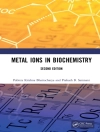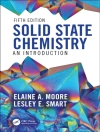There are various books on green chemistry on the market, but without focus on sustainable industrial processes. This resource provides an overview of the new trends and hot topics in process design, describing the challenge of designing industrial chemical processes that are up-to-date, sustainable, and economically feasible. The industrial applications are presented directly by the companies – a veritable ‘Who’s Who’ of the chemical industry – that developed these innovative technologies. It provides an essential reference for chemical engineers, chemists in industry, process engineers, catalytic chemists, materials scientists, and environmental chemists.
Inhoudsopgave
Preface XV
List of Contributors XIX
1 From Green to Sustainable Industrial Chemistry 1
Gabriele Centi and Siglinda Perathoner
1.1 Introduction 1
1.2 Principles of Green Chemistry, Sustainable Chemistry and Risk 11
1.3 Sustainable Chemical Production and REACH 36
1.4 International Chemicals Policy and Sustainability 43
1.5 Sustainable Chemistry and Inherently Safer Design 47
1.6 A Vision and Roadmap for Sustainability Through Chemistry 56
1.7 Conclusions 69
2 Methods and Tools of Sustainable Industrial Chemistry: Catalysis 73
Gabriele Centi and Siglinda Perathoner
2.1 Introduction 73
2.2 Catalysis as Enabling Factor of Sustainable Chemical Production 74
2.3 Homogeneous Catalysis and the Role of Multiphase Operations 77
2.4 Bio- and Bioinspired-Catalysts 103
2.5 Solid Acids and Bases 120
2.6 Redox Catalysis 158
2.7 Cascade and Domino Catalytic Reactions 184
2.8 Multicomponent Catalytic Reactions 186
2.9 Organocatalysis 187
2.10 Conclusions 188
3 Methods and Tools of Sustainable Industrial Chemistry: Process Intensification 199
Gabriele Centi and Siglinda Perathoner
3.1 Introduction 199
3.2 Alternative Sources and Forms of Energy for Process Intensification 230
3.3 Micro(structured)-Reactors 243
4 Membrane Technologies at the Service of Sustainable Development Through Process Intensification 257
Gilbert M. Rios, Marie-Pierre Belleville, Delphine Paolucci-Jeanjean, and José Sanchez
4.1 Introduction 257
4.2 From Definitions to Function: A Few Fundamental Ideas 258
4.3 The Need for More Integrated Views on Materials and Process Conditions 262
4.4 Use of Hybrid Processes and New Operating Modes: The Key to Many Problems 267
4.5 Safe Management of Membrane Integration in Industrial Processes: A Huge Challenge 273
4.6 Conclusions 276
5 Accounting for Chemical Sustainability 279
Gabriele Centi and Siglinda Perathoner
5.1 Introduction 279
5.2 Ecological Footprint 281
5.3 Ecological Indicators 283
5.4 Metrics for Environmental Analysis and Eco-Efficiency 283
5.5 Sustainability Accounting 292
5.6 E-Factor and Atom Economy 296
5.7 Energy Intensity 304
5.8 Environmental Impact Indicators 305
5.9 Sustainable Chemical Production Metrics 306
5.10 Life Cycle Tools 310
5.11 Conclusions 315
6 Synthesis of Propene Oxide: A Successful Example of Sustainable Industrial Chemistry 319
Fabrizio Cavani and Anne M. Gaffney
6.1 Introduction: Current Industrial Propene Oxide Production 319
6.2 PO-only Routes: Several Approaches for Sustainable Alternatives 323
6.3 Conclusions 358
7 Synthesis of Adipic Acid: On the Way to More Sustainable Production 367
Fabrizio Cavani and Stefano Alini
7.1 Introduction: The Adipic Acid Market 367
7.2 Current Technologies for AA Production 368
7.3 Alternatives for AA Production 385
7.4 Emerging and Developing Technologies for AA Production 402
7.5 An Overview: Several Possible Green Routes to AA, Some Sustainable, Others Not 413
8 Ecofining: New Process for Green Diesel Production from Vegetable Oil 427
Franco Baldiraghi, Marco Di Stanislao, Giovanni Faraci, Carlo Perego, Terry Marker, Chris Gosling, Peter Kokayeff, Tom Kalnes, and Rich Marinangeli
8.1 Introduction 427
8.2 From Vegetable Oil to Green Diesel 428
8.3 UOP/Eni Ecofining Process 434
8.4 Life Cycle Assessment 435
8.5 Conclusion 437
9 A New Process for the Production of Biodiesel by Transesterification of Vegetable Oils with Heterogeneous Catalysis 439
Edouard Freund
9.1 Introduction 439
9.2 Direct Use of Vegetable Oils 441
9.3 Methyl Ester Derived from Vegetable Oils 441
9.4 Homogeneous Process for the Production of Biodiesel 442
9.5 Improving the Transesterification Route: Esterfip-H 445
9.6 Future Improvements of the Process 447
9.7 Conclusion 448
10 Highly Sour Gas Processing in a More Sustainable World 449
François Lallemand and Ari Minkkinen
10.1 Introduction 449
10.2 Use of Activated MDEA for Acid Gas Removal 451
10.3 Process Performance Highlights 454
10.4 Case Study of the Use of Activated MDEA for Treatment of Very Sour Gas 454
10.5 Acid Gas Removal for Cycling and/or Disposal 456
10.6 Bulk H2S Removal for Disposal 458
10.7 SPREX Performance 459
10.8 Capital Cost and Energy Balance Comparison 460
10.9 Conclusions 461
11 Bio ETBE: A New Component for Gasoline 463
Marco Di Girolamo and Domenico Sanfilippo
11.1 Introduction 463
11.2 High Quality Oxygenated as Gasoline Components 463
11.3 ETBE Technology 466
12 Olefin/Paraffin Alkylation: Evolution of a ‘Green’ Technology 475
Anne M. Gaffney and Philip J. Angevine
12.1 Introduction 475
12.2 Liquid Acid Catalysts 476
12.3 Zeolite Catalysts 484
12.4 Alky Clean Alkylation Process: A True Solid Acid Catalyst (SAC) Process 488
12.5 Conclusion 504
13 Towards the Direct Oxidation of Benzene to Phenol 507
Marco Ricci, Daniele Bianchi, and Rossella Bortolo
13.1 Introduction 507
13.2 Cumene Process 508
13.3 Solutia Process 514
13.4 Direct Oxidation of Benzene to Phenol with Hydrogen Peroxide 516
13.5 Perspectives 525
13.6 Conclusions 525
14 Friedel-Crafts Acylation of Aromatic Ethers Using Zeolites 529
Roland Jacquot and Philippe Marion
14.1 Introduction 529
14.2 Literature Background 530
14.3 Acylation of Anisole by Acetic Anhydride 530
14.3.1 Industrial Processes 531
14.4 Acylation of Veratrole by Acetic Anhydride Over HY Zeolite 533
14.5 Deactivation of the Catalysts 534
14.6 Benzoylation of Phenol Ether 536
14.7 Concluding Remarks 539
15 Green Sustainable Chemistry in the Production of Nicotinates 541
Roderick Chuck
15.1 Requirements for Green Processes 541
15.2 Significance of Niacin 542
15.3 Green Principles in the Manufacture of Niacin 542
15.4 Green Principles in Lonza’s Niacinamide Process (5000 mtpa) 548
16 Introducing Green Metrics Early in Process Development. Comparative Assessment of Alternative Industrial Routes to Elliott’s Alcohol, A Key Intermediate in the Production of Resmethrins 551
Paolo Righi, Goffredo Rosini, and Valerio Borzatta
16.1 Introduction 551
16.2 Elliott’s Alcohol 552
16.3 An Alternative Synthesis of Elliott’s Alcohol 554
16.4 Comparative Assessment of the Two Alternative Routes to Elliott’s Alcohol 555
16.5 Driving the ‘Green’ Improvement 561
16.6 Conclusions 561
17 Basell Spherizone Technology 563
Maurizio Dorini and Gabriele Mei
17.1 Introduction 563
17.2 Technology Evolution 563
17.3 Spherizone Technology 567
17.4 Technology Comparison 575
17.5 Environmental Considerations 576
References 578
Index 579
Over de auteur
Professor Fabrizio Cavani received his Ph D in Industrial Chemistry from the University of Bologna in 1986. From 1986 to 1990 he worked at the Catalysis Centre of Eni Chem, where he investigated new catalysts for the oxychlorination of ethylene and for the Alkylation of benzene with propene, and gave technical assistance to the catalysts production division. In 1990 he joined the Catalytic Processes Development team at the University of Bologna becoming Associate Professor of Industrial Chemistry there in 2000. Hee is author of over 200 journal articles, 25 patents, two books on catalytic selective oxidation and one book on the development and management of chemical processes and is the editor of 4 special journal issues. he is on the board of the Italian Platform for Sustainable Chemistry.
Professor Gabriele Centi is Full Professor of Industrial Chemistry at the University of Messina and a past President of the European Federation of Catalysis Societies. He is the Coordinator of the Network of Excellence IDECAT and Co-Director of the European Laboratory for Catalysis and Surface Science and President of ERIC (European Research Institute of Catalysis). His research activities lie in the development of industrial heterogeneous catalysts for the field of sustainable chemical processes, environmental protection and clean energy. He is author of over 260 journal articles, editor and/or author of 7 books, editor of 7 special issues, chairman of several International Congresses and Editor of the Wiley-VCH journal Chem Sus Chem. He is also a Core Team member for the European Technology Platform for Sustainable Chemistry.
Professor Siglinda Perathoner is Associate Professor of Industrial Chemistry at the University of Messina. After some years experience in the field of photophysics and photochemistry of supramolecular systems, she moved to the area of catalysts. In 2001 she joined the University of Messina where her most recent research interest include nanostructured zeolites, catalytic membranes, catalysts for reactions in supercritical fluids, catalysts for waste water purification and remediation, photo(electro)catalytic conversion of carbon dioxide, and fuel cells. Her aim is the design of novel catalytic materials for sustainable processes, environment protection, and cleaner energy. She is author of over 130 publications, including 15 reviews, has been co-editor of a book and two special journal issues, and has contributed to various entries in encyclopedias.
Professor Ferruccio Trifiró is Full Professor of Industrial Chemistry at the University of Bologna. Currently he is the Dean of the Faculty of Industrial Chemistry, and Director of the journal La Chimica e L’Industria (Chemistry and Industry). His main research activities lie in the development of heterogeneous catalysts for processes in the field of petrochemistry, environmental protection, fine chemicals and specialties production, clean energy and hydrogen production. He is a past Chairman of the World Congress of Selective Oxidation. He is author of over 300 papers in International Journals, two books on Selective Oxidation, and of 18 patents.












